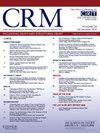Long-term clinical efficacy of transfemoral transcatheter aortic valve implantation with three different platforms
IF 1.9
Q3 CARDIAC & CARDIOVASCULAR SYSTEMS
引用次数: 0
Abstract
Background
Long-term durability and outcomes of transcatheter aortic valve implantation (TAVI) have been reported only with first generation devices.
Objectives
To compare clinical efficacy of TAVI with Sapien 3 (Edwards Lifesciences), Evolut R/PRO (Medtronic) or Acurate Neo (Boston Scientific) transcatheter heart valves (THVs) at long-term.
Methods
Consecutive TAVI patients treated with Sapien 3, Evolut R/PRO and Acurate Neo THVs at Policlinico G. Rodolico of Catania with at least 5 years follow-up were included in this analysis. Patients were divided into three different groups according to the TAVI device used. Outcomes were compared after inverse probability of treatment weighting adjustment. The primary endpoint was the composite of all-cause death, disabling stroke and heart failure (HF) re-hospitalization at 7 years. The co-primary endpoint was valve-related clinical efficacy according to Valve Academic Research Consortium 3 (VARC-3) definition, at 7 years.
Results
From September 2014 to December 2018, 383 tranfemoral TAVI patients receiving Sapien 3 (n = 131, 34.2 %), Evolut R/PRO (n = 134, 34.9 %), or Acurate Neo (n = 118, 30.8 %) devices were compared. At 7 years, the composite primary endpoint did not differ among study groups (60.2 % vs. 51.6 % vs. 62.1 % for Sapien 3, Evolut R/PRO and Acurate Neo, respectively, plog-rank = 0.50). The co-primary endpoint was also similar (2.2 % vs. 1.2 % vs. 4.2 %, for Sapien 3, Evolut R/PRO and Acurate Neo, respectively, plog-rank = 0.86).
Conclusions
Clinical efficacy of TAVI with Sapien 3, Evolut R/PRO and Acurate Neo devices was sustained and comparable up to 7 years. Low and similar rates of valve degeneration were reported among the three devices. Randomized clinical trials are necessary to corroborate these findings and to assess the impact of specific hemodynamic differences among the three THV platforms in the context of long-term clinical efficacy.
三种不同平台经股导管主动脉瓣植入术的长期临床疗效。
背景:经导管主动脉瓣植入术(TAVI)的长期耐久性和结果仅报道了第一代装置。目的:比较TAVI与Sapien 3 (Edwards Lifesciences)、Evolut R/PRO (Medtronic)或acute Neo (Boston Scientific)经导管心脏瓣膜(thv)的长期临床疗效。方法:纳入在卡塔尼亚Policlinico G. Rodolico接受Sapien 3、Evolut R/PRO和precision Neo THVs治疗的连续TAVI患者,随访至少5年。根据TAVI装置的不同,将患者分为三组。在治疗加权调整逆概率后比较结果。主要终点是7年时全因死亡、致残性卒中和心力衰竭再住院的综合结果。共同主要终点是根据瓣膜学术研究联盟3 (VARC-3)定义的瓣膜相关临床疗效,为7年。结果:2014年9月至2018年12月,383例经股TAVI患者使用Sapien 3 (n = 131, 34.2%)、Evolut R/PRO (n = 134, 34.9%)或accurate Neo (n = 118, 30.8%)装置进行比较。在7年时,综合主要终点在研究组之间没有差异(Sapien 3、Evolut R/PRO和accuracy Neo分别为60.2%、51.6%和62.1%,pllog -rank = 0.50)。共同主要终点也相似(Sapien 3、Evolut R/PRO和exact Neo分别为2.2%、1.2%和4.2%,plog-rank = 0.86)。结论:Sapien 3、Evolut R/PRO和accurate Neo装置对TAVI的临床疗效持续,可达7年。在这三种装置中,瓣膜退变率低且相似。需要随机临床试验来证实这些发现,并评估三种THV平台在长期临床疗效方面的特定血流动力学差异的影响。
本文章由计算机程序翻译,如有差异,请以英文原文为准。
求助全文
约1分钟内获得全文
求助全文
来源期刊

Cardiovascular Revascularization Medicine
CARDIAC & CARDIOVASCULAR SYSTEMS-
CiteScore
3.30
自引率
5.90%
发文量
687
审稿时长
36 days
期刊介绍:
Cardiovascular Revascularization Medicine (CRM) is an international and multidisciplinary journal that publishes original laboratory and clinical investigations related to revascularization therapies in cardiovascular medicine. Cardiovascular Revascularization Medicine publishes articles related to preclinical work and molecular interventions, including angiogenesis, cell therapy, pharmacological interventions, restenosis management, and prevention, including experiments conducted in human subjects, in laboratory animals, and in vitro. Specific areas of interest include percutaneous angioplasty in coronary and peripheral arteries, intervention in structural heart disease, cardiovascular surgery, etc.
 求助内容:
求助内容: 应助结果提醒方式:
应助结果提醒方式:


